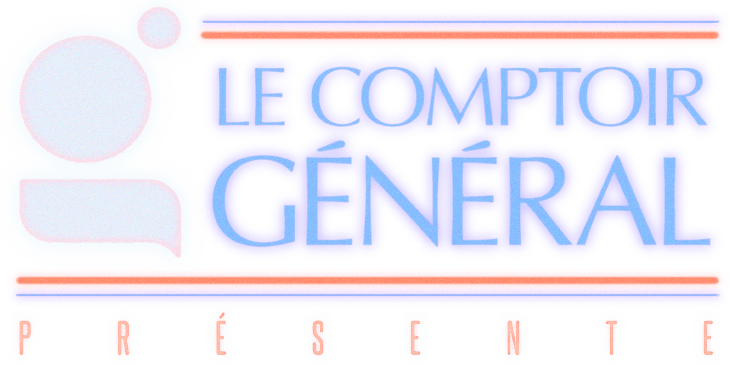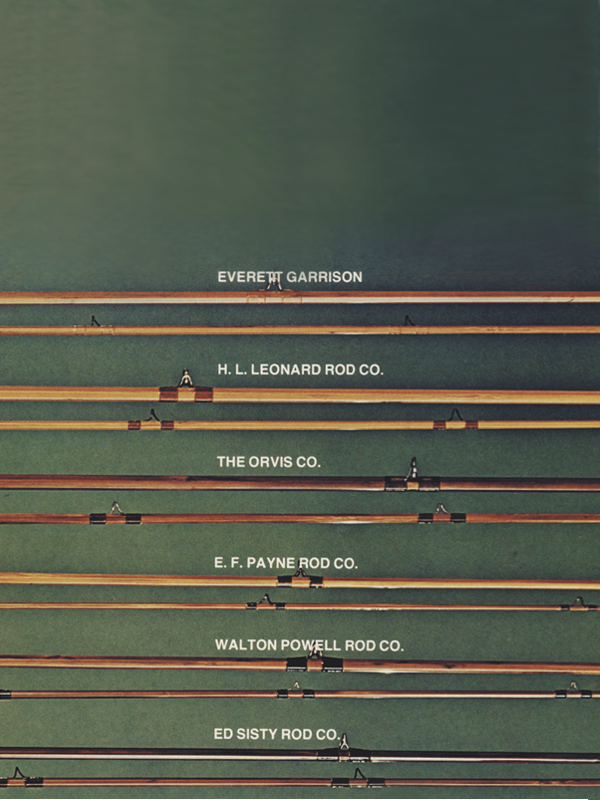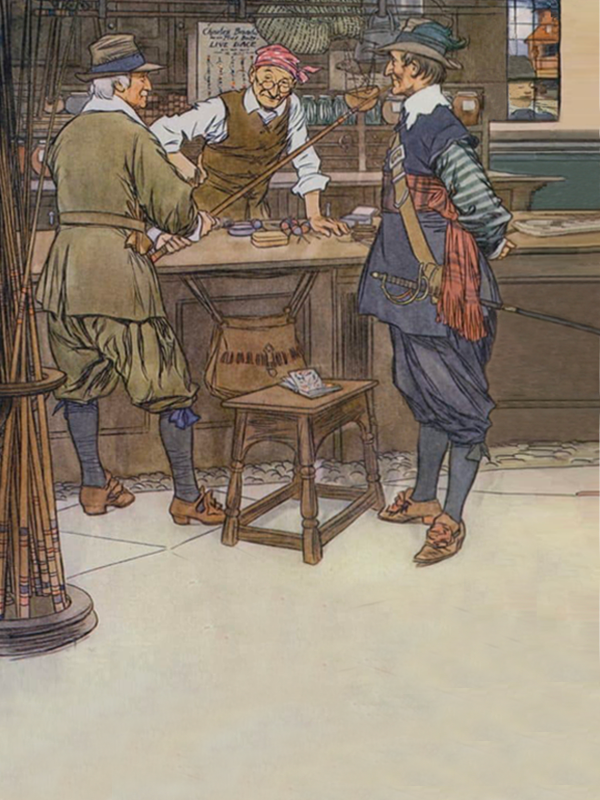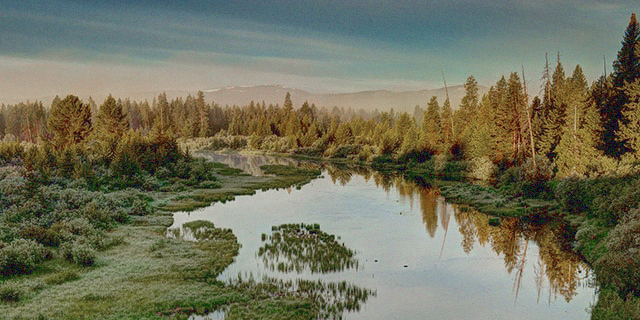
Farlow’s
Farlow’s

Less known than Hardy’s, Farlow’s was nevertheless established in London thirty years before William Hardy first set up as a gunsmith in the north of England.
Charles Farlow indeed created his fishing tackle company in 1838, which certainly makes it today the oldest company manufacturing fishing tackle still in activity. And if for more than thirty years, Hardy’s closed its famous London store at 61 Pall Mall, Farlow’s, with the help of Russian oligarchic funds, took the opportunity to move and modernize its own shop, in the same street, at n°4. Apart from its own products, it even distributes those of its former competitor, since practically the whole range of Hardy’s products is available there. In fact, since the beginning of the last century, Farlow’s, which was already very specialized, perhaps even more than Hardy’s, in trout and salmon fly fishing, in addition to its own products (reels, split bamboo rods, landing nets, small equipment, flies, etc…) also distributed the best products of its “competitors”.
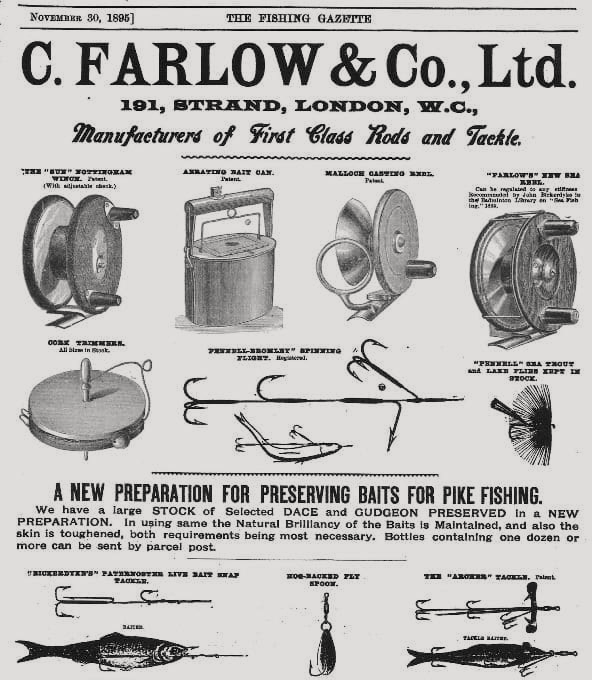
Older than Hardy by 35 years, Farlow has been distributing the best products of Sun, Malloch, Jardine, etc. since 1895, in addition to its own products (rods, reels).
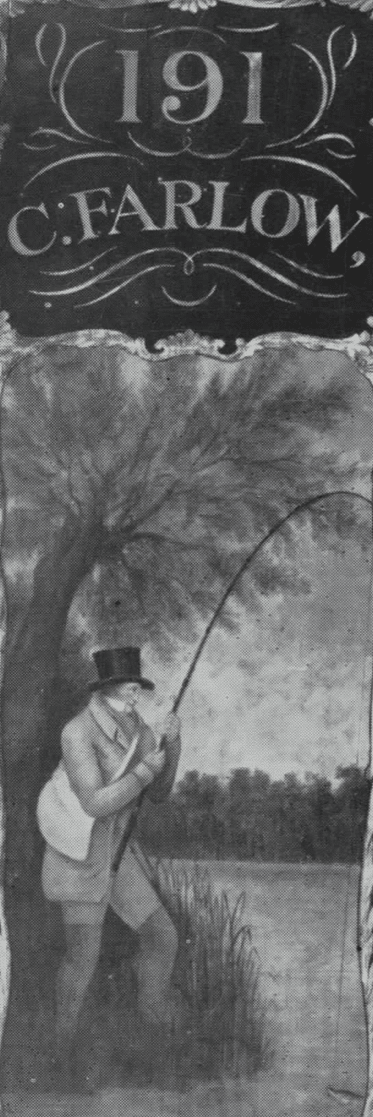
Since the middle of the 19th century, Farlow's has been located at No. 191 on the Strand, one of the most famous avenues in London, overlooking Picadilly.
Today, in the splendid and very large store of Pall Mall, on two floors, you will find the essential “fly tackle” of the Hardy’s range, but also the best rods from Sage, Winston, Thomas & Thomas, Scott, etc. For the reels you will have the embarrassment of choice, and for clothing, waders etc., the biggest and most serious brands like Patagonia, Simm’s, Barbour, are selected. The salesmen who have been fly fishing all over the world, from Tierra del Fuego to Alaska and from the Seychelles to the Kola Peninsula, passing through Scotland and Iceland, will be able to advise you on the equipment you will need for a particular destination. If you are a fly fisherman visiting London, a visit to “Farlow’s Pall Mall” is a must.
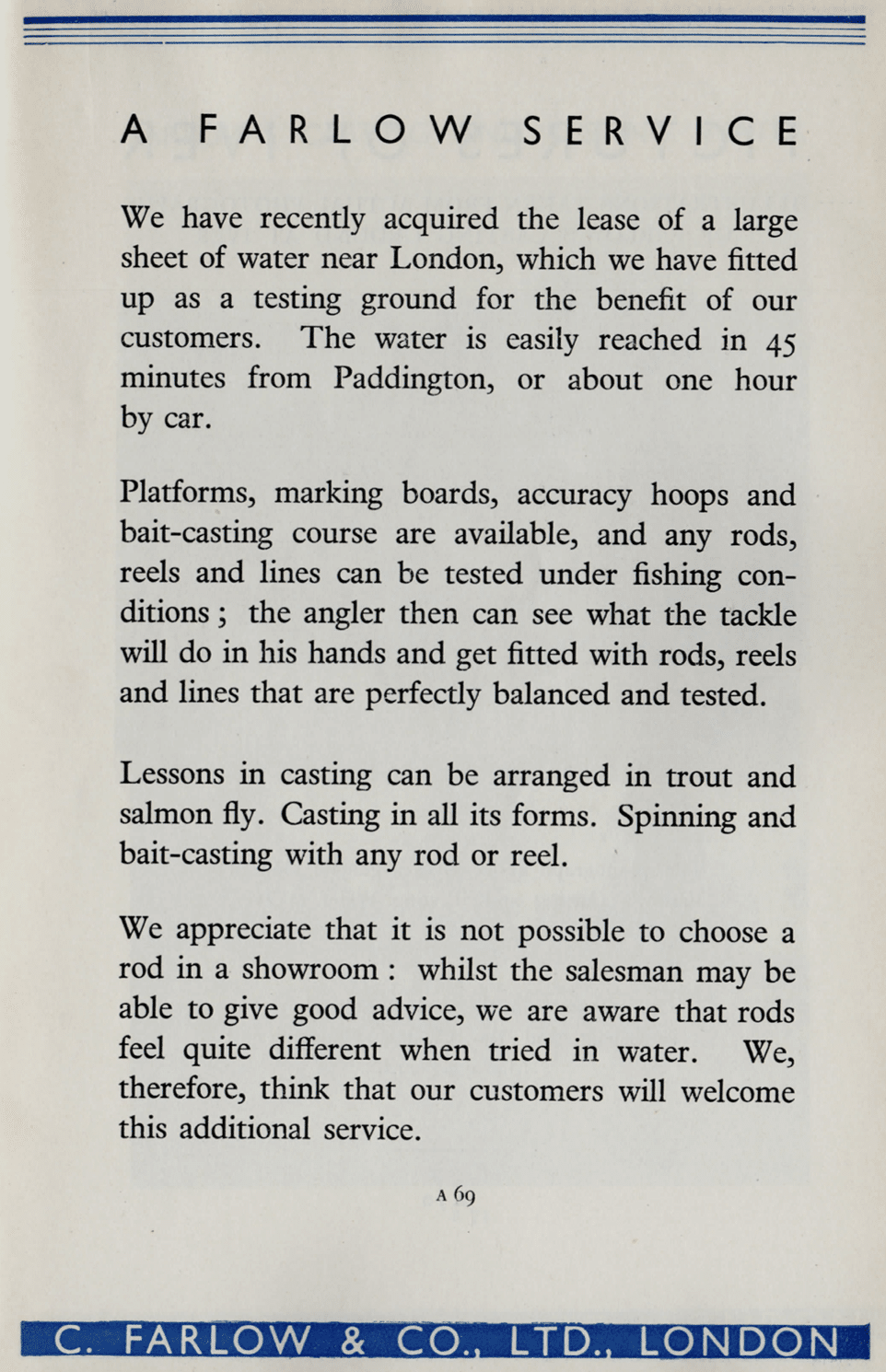
Like Orvis in the U.S., Farlow has created a fishing school less than an hour from London, where customers can try out rods and lines on the water before purchasing.
As part of the 175th anniversary celebrations – and its future policy – a “classic” range of British-made products has been reintroduced. The famous “Regal” reel, made in the 1930s, is once again being produced, in an identical but lighter version, to balance carbon rods rather than split bamboo. The emblematic “Holdfast” logo, created by Charles Farlow himself at the end of the 19th century, is again stamped on it, as on the other reel models of the brand.
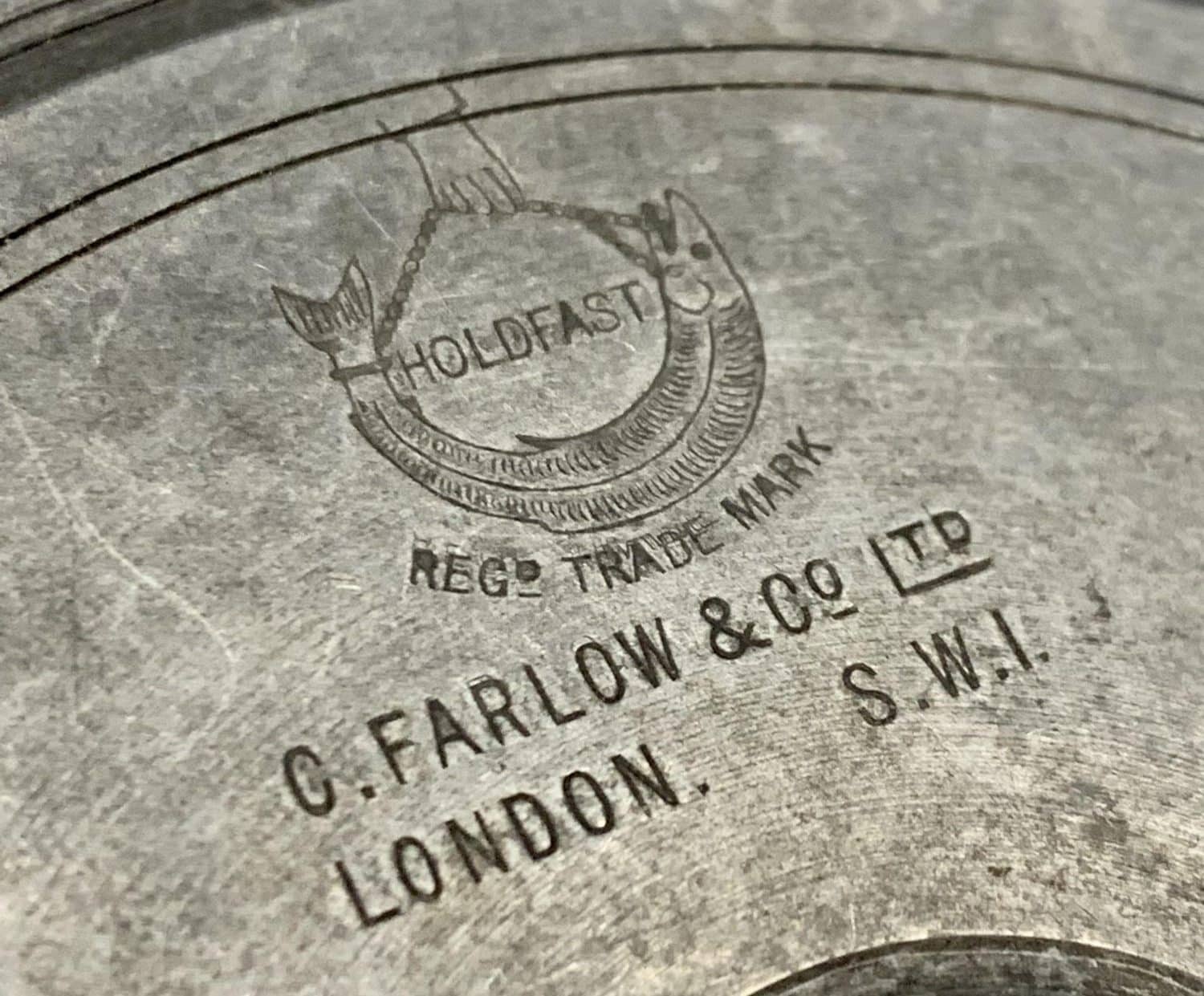
The famous "Holdfast" logo created by Charles Farlow himself in 1850.
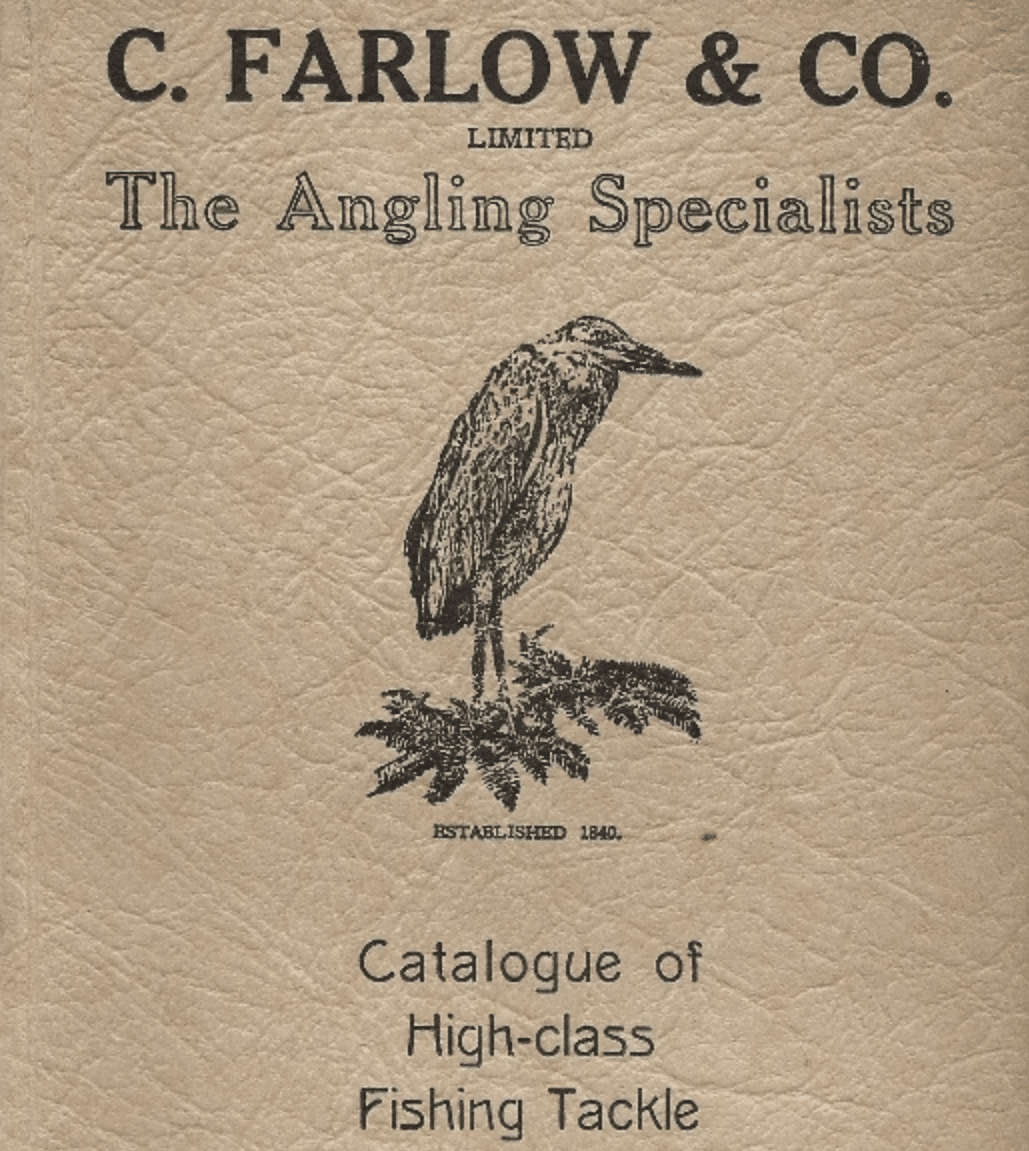
The great interest of the Farlow catalogs is that they also present and describe fishing tackle of many other brands.
Just as sought after as Hardy’s catalogs, Farlow’s catalogs from the beginning of the last century until the fifties, present for some over 300 pages, dozens of models of rods (at the beginning in “Hickory”, or ironwood, imported from North America, then of course in split bamboo), of all lengths and powers, reels, landing nets, gaffs, lines in braided natural silk and of course flies made in England by specialized workers, including the famous “Pennel” series for trout or “Crosfield” for salmon. But these catalogs also offer the reader precious advice, given by the best specialists of the time, to practice such or such fishing, in the British Isles (Scotland, Wales, Ireland), of course, but also in Norway, Canada or New Zealand.
Just before the Second World War, with the development of fixed-drum fishing, Farlow’s company developed a whole range of rods, also for this type of fishing. But unlike Hardy’s, Farlow’s never made its own spinning reels, importing only Malloch’s reels at first, and then after the war some Mitchell models. Their lures, wobbling spoons for salmon and pike, and their devons were not particularly special.
Farlow’s was importing Pezon split parts to make Fario Club rods.
In the field of split bamboo fly rods, the first models of which date back to 1870/1880, it is only from 1926 with the patent of the “Holdfast” ferrules that some models could compete with those of Hardy. It is interesting to note that from the beginning of the 60’s, Farlow’s was an importer of “raw” elements of Pezon & Michel split canes: Parabolic, Super Parabolic and especially some models of PPP, of which the famous “Ritz Fario Club”. These “Pezon” rods, which were finished in Farlow’s workshop in Croydon (South London suburb), are still very much sought after, both by anglers and collectors, because from the 70’s and 80’s, their finish was clearly superior to the original models made in Amboise. Also, in association with Sharpe’s, the manufacturer of split rods in Aberdeen (Scotland), Farlow’s manufactured so-called “American” models, according to the indications of the famous salmon fisherman : Lee Wulff. The three Wulff’s models: Ultimate, Vagabond and Midge are still considered, almost half a century after their introduction, as the best in terms of casting and fish holding. In particular the Midge with a length of 6 feet (1,80 m), for 5 to 7 line, manufactured in England/Scotland, but that the best salmon and big trout fishermen in the United States tear off, when they find one “second hand”.
